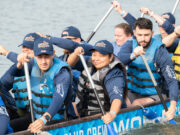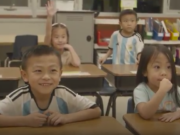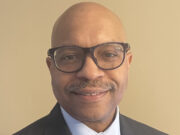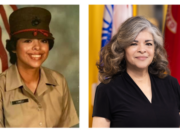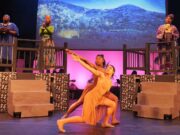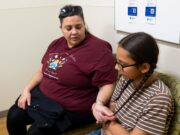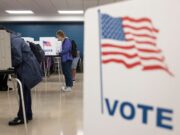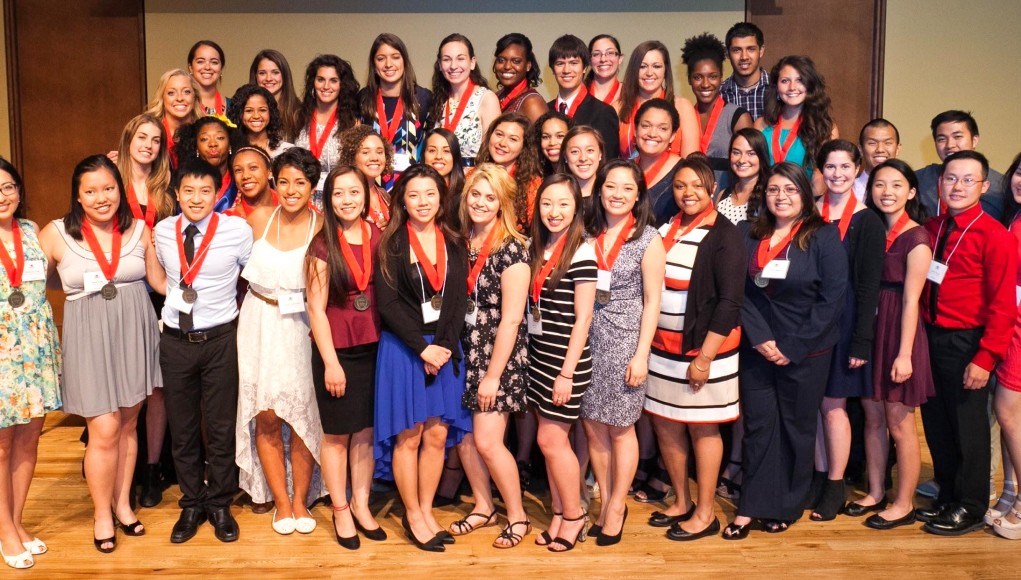Over 30,000 undergraduate students attend the University of Wisconsin-Madison. Minorities made up 15 percent of the undergraduate student body in 2014. At an overwhelmingly white institution, students of color find it harder to navigate less diverse settings and find a sense of themselves where they are so few in numbers. Some students, whose high schools didn’t equip them as well as their white counterparts, find the rigor of coursework challenging.
But the adjustment to college life wasn’t as pronounced for Egal Warsame, a senior majoring in biology from Milwaukee. Warsame was first introduced to UW-Madison when he was still in high school thanks to PEOPLE, a college preparatory program through the university that begins in middle school or high school depending on where in Wisconsin the student is from. Being exposed to UW early on gave Warsame a support group and experience in the STEM [Science, Technology, Engineering and Math] field through internships the program offers.

“I didn’t have the struggles of trying to comprehend the structure of college or how to prepare myself, move around on campus or how to handle such a big environment because we’d already experienced those [things] in high school,” Warsame said.
Scholarship programs like PEOPLE are an important part of the solution to closing gaps in graduation rates between the general student body and minority students. According to the UW’s 2015 Academic Planning and Research report, 84 percent of the general student body graduates within five years. The graduation rate of targeted minority students (black, Latino, Native American, and Southeast Asian) also increased, but, at 70 percent, remains significantly below the general rate.
National data shows similar trends. More than two-thirds of four-year, public colleges and universities have increased graduation rates in the last 10 years, both overall and for underrepresented students .
“Improvements were greatest for Latino students, and Native students saw an increase of 6.4 percentage points. Gains among black students were the lowest, which means that gaps between black and white students actually increased,” said The Education Trust in their December press release.
A national report by The Education Trust recently ranked UW-Madison among the top performing institutions for underrepresented minorities, likely due to a number of scholarship programs meant to help these students succeed.
UW-Madison offers five full-tuition scholarships for underrepresented groups through the Division of Diversity Equity and Educational Achievement. These include the Chancellor’s and Powers-Knapp’s, PEOPLE, Posse and First Wave. These programs work to provide students of color, first-generation and socioeconomically disadvantaged students with the necessary resources to graduate from the university and eradicate the sustained achievement gap.

Warsame, who partially credits his success in college to his early involvement with the PEOPLE program, hopes to be admitted into medical school. As a doctor, Warsame hopes to be a doctor in inner-city areas to increase access and decrease disparities that low-income and people of color experience in the health care system.
One of his biggest motivations has been his father’s death from cholera in Somalia. “It was during the Somalian Civil War, and the access wasn’t there,” Warsame said. “Growing up, we didn’t have a lot of money, and it took us a long time to get health care. I noticed that emergency rooms are poor people’s ‘check-ups’. I want to work in the emergency rooms to provide the care that my father didn’t receive.”
The Chancellor’s Scholarship Program has the highest graduation rate of all the programs with 72 percent in four years and 85 percent in five. The program began in 1984 with a cohort of just 6. This year’s incoming class has 68 students, and in total over 250 students.
CS/PKS student services coordinator Joe Maldonado said it comes down to the three core components of the program: scholarship, leadership and service.
“They’re going to know what they’re doing and where they’re going, even if they don’t have it completely figured out how yet. It’s in the DNA of the program,” Maldonado said. “We push students towards understanding themselves, their place in the world and where they want to go with their talents, strengths and interests.”
Pf’anique Hill said she wouldn’t have ended up at UW without First Wave.
“First Wave has given me a full tuition scholarship to pursue my arts, activism and academics,” said Hill. “If not for First Wave I would’ve either attended Marquette or not have attended school at all.”

Hill is currently in UW’s School of Education and aims to follow the legacy of her mother and aunt by becoming a teacher.
“I feel that teaching is the greatest profession in life. You can’t be anything without learning anything. Every profession that everyone partakes in has to be taught by a teacher,” said Hill.
First Wave is the newest of the programs that recruits students interested in the hip-hop arts and allows them a gateway to pursue their arts, academics and activism simultaneously. UW is the first university in the nation to offer a hip-hop arts scholarship that recruits nationally and internationally.
“A wave creates change. When a wave hits the shore, there is some kind of change that occurs,” Hill said. “And I believe that First Wave is the change that happens on this campus, and I’m hella’ proud to be a part of that change.”






